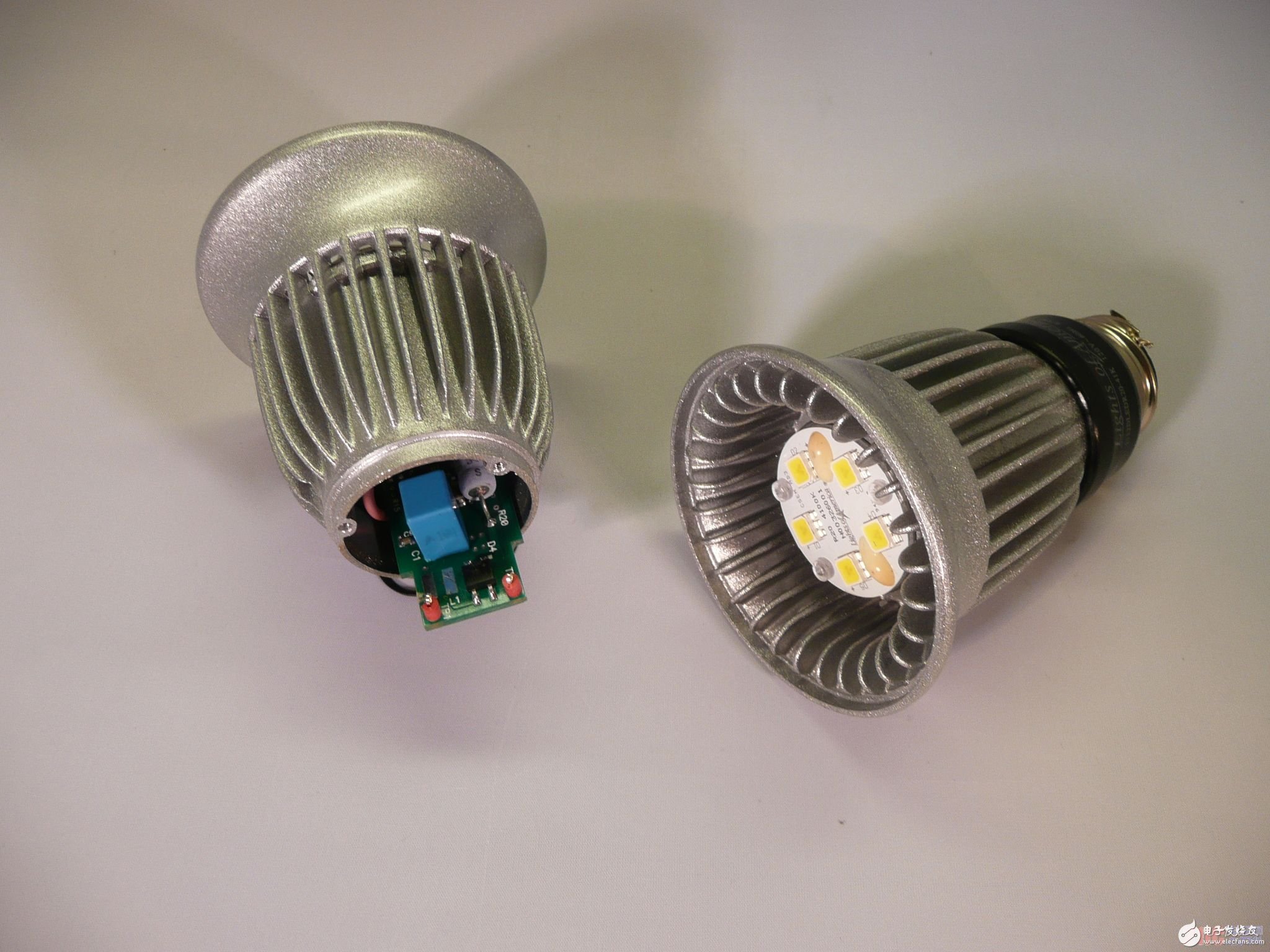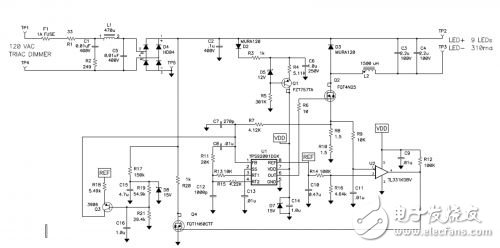There are many advantages to replacing a screw-in type incandescent bulb with a bulb that uses LEDs as a light source. In general, we connect the small (5-9) LEDs in series, using a single power supply to convert the line voltage to a low voltage (usually tens of volts), which is about 350 to 700 mA. In determining how best to isolate the user from the line voltage, we need to think carefully and weigh the pros and cons. We can isolate this in the power supply or in the LED installation process. In some low-power designs, LED physical isolation is a common method because it allows the use of lower cost, non-isolated power supplies. Figure 1 shows a typical LED lamp replacement method. The power supply in this example is a non-isolated power supply, which means that isolation that achieves user high voltage protection is embedded in the package rather than the power supply. Obviously, the space of the power supply is extremely small, posing a challenge to the package. In addition, the power supply is buried inside the package, which hinders heat dissipation and affects efficiency.


Figure 1 Lamp replacement makes the power supply space extremely small
Figure 2 shows a non-isolated circuit that powers the LEDs through a 120 volt AC supply. It contains a rectifier bridge that powers the buck power stage. The buck regulator is an "inverted version" with its power switch Q2 in the loop and loop diode D3 connected to the power supply. The current is regulated by a source resistor while the power switch is on. Although this is quite efficient (80%-90%), this circuit has several drawbacks that limit efficiency. When turned on, the power switch must carry all of the output current, and when the power switch is turned off, the output current flows through the loop diode. In addition, the current sense resistors R8 and R10 have a voltage of approximately 1 volt. All three voltage drops are large compared to the 15 to 30 volt LED voltage and can limit power efficiency. More importantly, these losses will promote the temperature rise of the bulb. The ability of the LED to illuminate slowly, and this ability is closely related to the operating temperature of the LED. For example, at 70oC, the LED light output is reduced by 30% for more than 50,000 hours, and at 80oC, this time is only 30,000 hours. Since the bulbs are mounted in some "cylinders" which tend to block heat dissipation, which is detrimental to convective cooling, the heating problem is further complicated.

Figure 2 Buck regulator implements a simple offline LED driver
Micro camera is the product of modern high-tech, also known as micro monitor, which has the characteristics of small size, powerful function and good concealment.
Micro cameras are widely used, suitable for aviation, commerce, media, enterprises and institutions, families and other industries. The emergence of miniature cameras brings convenience to people's lives, and at t,he same time, some phenomena related to corporate secrets and personal privacy also arise.
Hat Camera, widely used Camera,small size Camera
Jingjiang Gisen Technology Co.,Ltd , https://www.gisentech.com